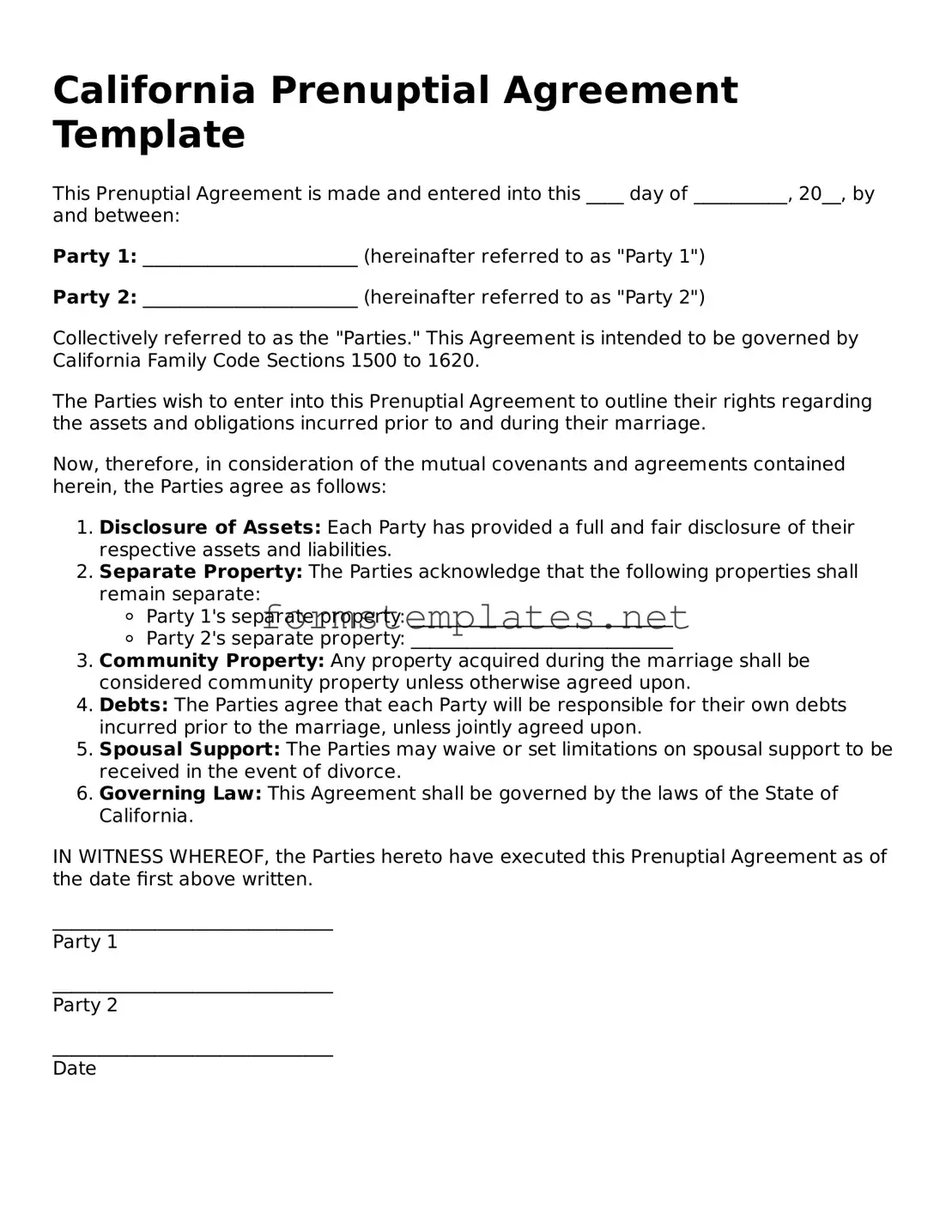California Prenuptial Agreement Template
This Prenuptial Agreement is made and entered into this ____ day of __________, 20__, by and between:
Party 1: _______________________ (hereinafter referred to as "Party 1")
Party 2: _______________________ (hereinafter referred to as "Party 2")
Collectively referred to as the "Parties." This Agreement is intended to be governed by California Family Code Sections 1500 to 1620.
The Parties wish to enter into this Prenuptial Agreement to outline their rights regarding the assets and obligations incurred prior to and during their marriage.
Now, therefore, in consideration of the mutual covenants and agreements contained herein, the Parties agree as follows:
- Disclosure of Assets: Each Party has provided a full and fair disclosure of their respective assets and liabilities.
- Separate Property: The Parties acknowledge that the following properties shall remain separate:
- Party 1's separate property: ____________________________
- Party 2's separate property: ____________________________
- Community Property: Any property acquired during the marriage shall be considered community property unless otherwise agreed upon.
- Debts: The Parties agree that each Party will be responsible for their own debts incurred prior to the marriage, unless jointly agreed upon.
- Spousal Support: The Parties may waive or set limitations on spousal support to be received in the event of divorce.
- Governing Law: This Agreement shall be governed by the laws of the State of California.
IN WITNESS WHEREOF, the Parties hereto have executed this Prenuptial Agreement as of the date first above written.
______________________________
Party 1
______________________________
Party 2
______________________________
Date
